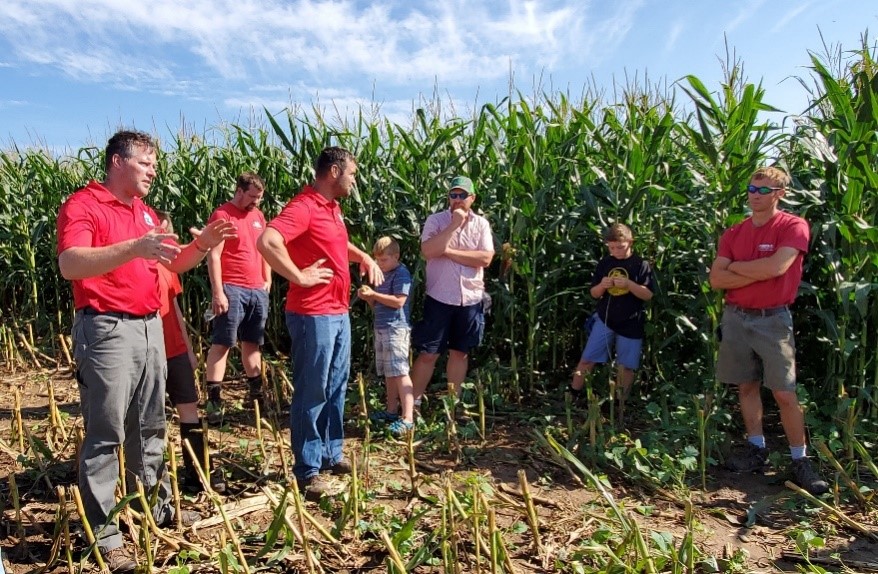
Trying new things on the farm and then comparing notes with fellow farmers is what Joe Loehr and his brother, Mark, love most about their membership in Sheboygan River Progressive Farmers (SRPF).
They jointly own Loehr Dairy in eastern Fond du Lac County where they milk 550 cows and run about 1,000 acres. Joe Loehr assisted in the formation and launch of SRPF, a farmer-led conservation group, and is happy his family-owned farm is participating in the practices promoted by the group to help bolster their already strong commitment to caring for the environment.
“I think the nature of being here nearly 150 years on the same land is evidence of good conservation work,” Loehr said. “But now, having other farmers around who want to share ideas and information about conservation is the biggest benefit of being a part of this group. There’s nothing we have to experiment with completely alone anymore.”
SRPF’s 35 members represent 23,000 acres and nearly 13,000 dairy cows, beef cattle and pigs. The group collaborates with university researchers, environmental groups and community leaders to promote and implement innovative farming practices.
In 2020, members planted 6,762 acres in cover crops, 10,746 acres using strip-tillage and no-tillage, and 7,040 acres with low-disturbance manure applications. In all, conservation practices were used on 89,000 acres, up more than four times from just two years earlier. Some farmers incorporate multiple practices on the same fields.
All of that work is making a difference by significantly reducing the chance of harmful runoff into streams and lakes.
The farmers last year potentially prevented an estimated 51,000 pounds of phosphorus from leaving the fields and 3,700 tons of sediment erosion, according to research shared by the state Department of Agriculture, Trade and Consumer Protection, the University of Wisconsin-Madison, and The Nature Conservancy (TNC). For comparison, a mid-size dump truck can carry 10 tons of sediment. One pound of phosphorus in a lake or stream has the potential to cause the growth of up to 500 pounds of algae, which can degrade water quality.
The analysis calculated an estimate of the potential impact of cover crops, strip-tillage and no-tillage compared to more conventional methods typical to the SRPF’s area.
Loehr said he loves to experiment on the farm and continues to try various interseeding and forage blends planted either with corn crops or instead of corn. This is the first year the dairy is using only no-till planting and has cover crops planted on every tillable acre throughout the winter.
“As farmers, we believe plants are more valuable than cultivation,” he said. “Plant roots benefit us a lot if they’re in the ground 365 days a year instead of us allowing the soil to sit empty. This helps us produce a much more bountiful crop each year and is better for the environment than turning the ground over and killing off the life existing in the soil.”
SRPF President Joe Wagner is excited to watch as soil health in the area continues to improve. He said trying new practices can be challenging, but he hopes members will be open-minded.
“People have to give these things a shot,” Wagner said. “It’s good to start small, try one field and see where it gets you. Be open-minded and know that we can’t keep doing the same thing over and over.”
Wagner is setting an example.
“I’ve been trying to plant green for two years and have been no-tilling for about six years,” he said. “We expanded our cover crop acreage this year and are doing some yield trials. My hope is that over time the good, productive years help even out the tougher years for all of our farmers.”
Loehr is impressed with the increase in adoption of conservation practices.
“I think (what) we’re learning, especially in the last couple decades, with some of our farming practices is that we absolutely must work together with the earth. When we’re improving it, it’s improving our chance of success,” he said. “We must work to sustain life in the soil every day that we possibly can.”

